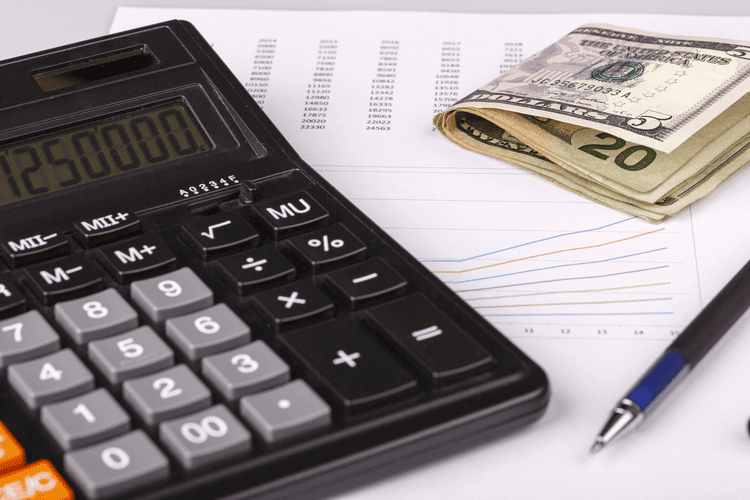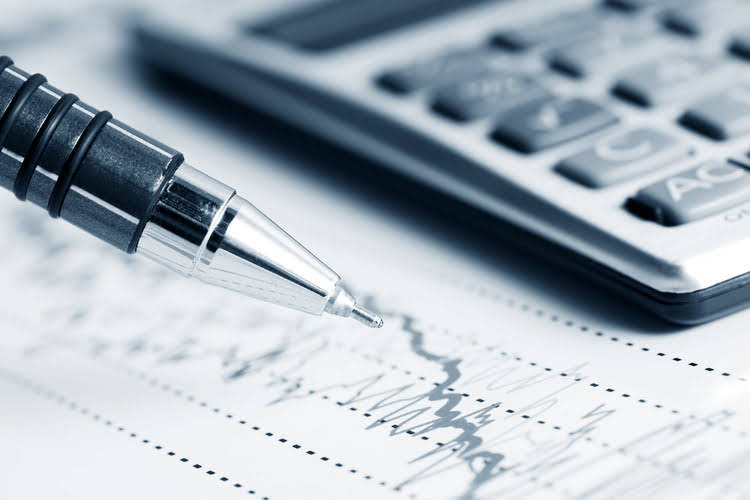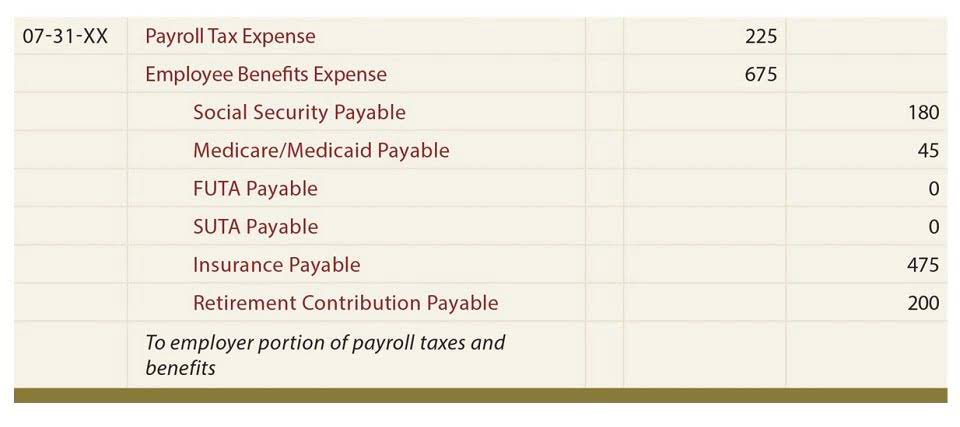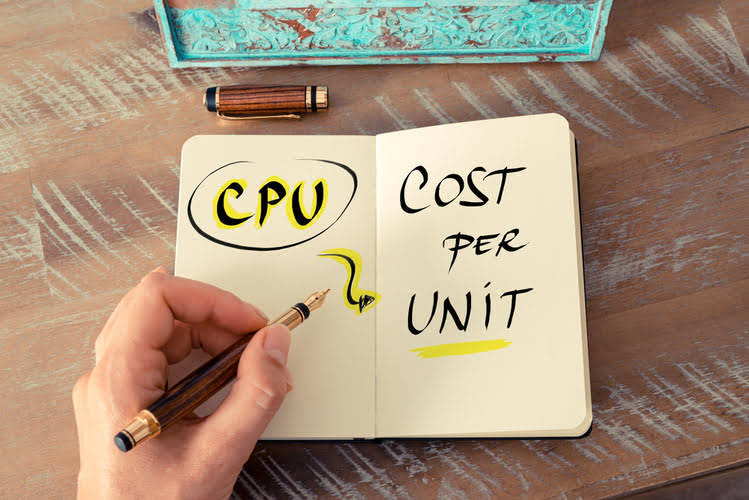Content

Every business works with financial statements that give them a precise analysis of their monthly and annual profits or losses. A business’s balance sheet helps an owner discover what their company is worth and determine the financial strength of their business, according to the U.S. In financial accounting, assets are economic resources.
Capital and reserves for SMEs. How much does a business need? – Realbusiness
Capital and reserves for SMEs. How much does a business need?.
Posted: Wed, 01 Dec 2021 11:43:35 GMT [source]
On a more granular level, the fundamentals of financial accounting can shed light on the performance of individual departments, teams, and projects. Whether you’re looking to understand your company’s balance sheet or create one yourself, the information you’ll glean from doing so can help you make better business decisions in the long run.
How To Reduce Labor Costs: Keeping Your Biggest Business Expense In Check
It is used to transfer totals from books of prime entry into the nominal ledger. Every transaction is recorded twice so that the debit is balanced by a credit. Some common asset accounts include cash or bank accounts, accounts receivable , inventory, fixed assets , and investments. Each transaction in a double-entry accounting system has two sides. The first side of the transaction is called the debit side of the transaction. The offsetting side of the transaction is called the credit side of the transaction. Debits are recorded on the left side of your balance sheet in double-entry accounting.
Business activity will impact various asset, liability, and/or equity accounts without disturbing the equality of the accounting equation. To reveal the answer to this question, look at four specific cases for Edelweiss. See how each impacts the balance sheet without upsetting the basic equality. There are four types of financial statements, and the balance sheet is one among them.
Ways Your Accounting Firm Can Bring More Value To Its Clients
A significant report for every business leader to review, at least annually, is the balance statement. It gives business leaders insight into the financial health of the company.

Harold Averkamp has worked as a university accounting instructor, accountant, and consultant for more than 25 years. He is the sole author of all the materials on AccountingCoach.com. Fixed assets such as real estate, heavy machinery, furniture, vehicles, etc. Financial modeling is performed in Excel to forecast a company’s financial performance.
Accounting Formula
When you buy a share of common stock, you are buying a part of that business. If a company were divided into 100 shares of common stock and you bought 10 shares, you would have a 10% stake in the company. If all the company’s assets were converted into cash and all its liabilities were paid off, you would receive 10% of the cash generated from the sale. This increases the accounts receivable account by $55,000, and increases the revenue account.
Assets refer to resources owned and controlled by the entity as a result of past transactions and events, from which future economic benefits are expected to flow to the entity. In simple terms, assets are properties or rights owned by the business. Liabilities are obligations to other parties, such as payable to suppliers, loans from banks, bonds issued, etc. They are also classified into current (short-term) and non-current (long-term) liabilities.
What Are Assets, Liabilities, And Equity
For this exercise, it’s helpful to think of stockholders’ equity as what’s left when a company has paid all its debts, sometimes referred to as book value. Assets are things that could increase the value of a company over time, while liabilities are debts that must be paid or goods and services obligations that must be fulfilled. Investors may wonder where common stock fits into the equation. You can further break down your list of assets by determining which are current and which are noncurrent.
- When you add your total liabilities and total equity, the result should equal your total assets.
- If a company wants to manufacture a car part, they will need to purchase machine X that costs $1000.
- For ABC corporation, the accounting equation reveals that $150 million of assets is financed by $60 million in liabilities and $90 million of shareholder equity.
- We’ll do one month of your bookkeeping and prepare a set of financial statements for you to keep.
- Long-term liabilities are typically mortgages or loans used to purchase or maintain fixed assets, and are paid off in years instead of months.
To find your company’s total assets and compare them to the sum of your liabilities and shareholder’s equity, first identify the different types of assets on your balance sheet. Once you locate your total current and non-current assets, add them together to get your total assets. Current liabilities are usually paid with current assets; i.e. the money in the company’s checking account.
Financial Accounting
It may be helpful to think of the accounting equation from a “sources and claims” perspective. Under this approach, the assets were obtained by incurring liabilities or were provided by owners. Stated differently, every asset has a claim against it—by creditors and/or owners.
Assets, liability, and equity are the three components of abalance sheet. In order for the balance sheet to be considered “balanced”, assets must equal liabilities plus equity. These three categories allow business owners and investors to evaluate the overall health of the business, as well as its liquidity, or how easily its assets can be turned into cash. It is important to pay close attention to the balance between liabilities and equity. A company’s financial risk increases when liabilities fund assets. This is sometimes referred to as the company’s leverage.
AWithdrawal account is used when the owner takes money out for personal use. By understanding the accounting formula and its role within your business, you can better monitor your businesses’ financial stability. Having a good understanding of the account types is necessary for anyone creating accounts, posting transactions and journal entries, or reading financial reports. Even though no one is really writing down debits and credits in ledgers anymore, you’re still following the same process. Every time you purchase or sell something, you need to classify that transaction, and that classification will impact two accounts on your chart of accounts . Includes non-AP obligations that are due within one year’s time or within one operating cycle for the company .
If it’s financed through debt, it’ll show as a liability, but if it’s financed through issuing equity shares to investors, it’ll show in shareholders’ equity. In order for the accounting equation to stay in balance, every increase in assets has to be matched by an increase in liabilities or equity . Your liabilities are any debts your company has, whether it’s bank loans, mortgages, unpaid bills, IOUs, or any other sum of money that you owe someone else. Assets will typically be presented as individual line items, such as the examples above. Then, current and fixed assets are subtotaled and finally totaled together.

A short-term asset means that the asset will be used, sold, or liquidated to pay for liabilities within a year; and a long-term asset won’t be used or sold within the year. This doesn’t necessarily mean that the company owns those things, simply that they have them in their possession. A balance sheet is often shown in two columns, and you’ll find assets listed in order of liquidity in the left column. If a company wants to manufacture a car part, they will need to purchase machine X that costs $1000. It borrows $400 from the bank and spends another $600 in order to purchase the machine. Its assets are now worth $1000, which is the sum of its liabilities ($400) and equity ($600).
The Balance Sheet
If you did everything right, your total assets will equal the sum of your liabilities and equity. Assets are a company’s resources—things the company owns.
This decreases the inventory account and creates a cost of goods sold expense that appears as a decrease in the income account. The Shareholders’ Equity part of the equation is more complex than simply being the amount paid to the company by investors. assets = liabilities + equity examples It is actually their initial investment, plus any subsequent gains, minus any subsequent losses, minus any dividends or other withdrawals paid to the investors. The upper acceptable limit is 2.00 with no more than 1/3 of debt in long-term liabilities.
Is revenue A equity?
Revenue has a credit balance and increases equity when it is earned. Expenses – Expenses are essentially the costs incurred to produce revenue. Costs like payroll, utilities, and rent are necessary for business to operate. Expenses are contra equity accounts with debit balances and reduce equity.
Recording accounting transactions with the accounting equation means that you use debits and credits to record every transaction, which is known as double-entry bookkeeping. $1.47With a more conservative view at Acme Manufacturing’s operating liquidity, there is definitely enough cash and liquid assets to cover short term debts. Similar to the Current Ratio, the Quick Ratio provides a more conservative view as Inventories are excluded in the calculation under the assumption that inventory cannot be turned into cash quickly. If the ratio is 1 or higher, the company has enough cash and liquid assets to cover its short-term debt obligations. A current ratio of 2.00, meaning there are $2.00 in current assets available for each $1.00 of short-term debt, is generally considered acceptable.
Accounting Equation Definition – Investopedia
Accounting Equation Definition.
Posted: Sun, 26 Mar 2017 00:30:41 GMT [source]
Thus, the asset and equity sides of the transaction are equal. This increases the inventory account and increases the accounts payable account. The Working Capital ratio is similar to the Current Ratio but looks at the actual number of dollars available to pay off current liabilities. Like the current ratio, it provides an indication of the company’s ability to meet its current debt. A negative result would indicate that the company does not have enough assets to pay short-term debt. This ratio measures a firm’s liquidity – whether it has enough resources to pay its current liabilities. It calculates how many dollars in current assets are available for each dollar in short-term debt.
Similar to the Income Statement, Acme manufacturing’s Balance sheet can be assessed through a variety of ratios and functions. While credit decisions should not be based on the analysis of a balance sheet or income statement alone, it does offer insight to show general business health.
Liabilities are presented as line items, subtotaled, and totaled on the balance sheet. You’ve probably heard at least some of these terms before. Below, we’ll explore what exactly goes on a balance sheet.
The sale of ABC’s inventory also creates a sale and offsetting receivable. This increases the receivables account by $6,000 and increases the income account by $6,000. When a large amount of cash is recorded on the balance sheet, it’s generally a good sign as it offers protection during business slow-downs and provides options for future growth.
In a corporation, capital represents the stockholders’ equity. While investors may not find the balance sheet as exciting as other financial statements because it does not include revenue, that doesn’t mean it’s not important. For investors, the balance sheet explains how a company’s assets are supported or financed, which reveals a lot about a company’s financial health. In many cases, investors will look for a greater equity value compared to liabilities as a sign of a positive investment. Conversely, having high levels of debt can signal that a business will face financial issues. Assets are what a business owns and liabilities are what a business owes.

Anything tangible or intangible that is capable of being owned or controlled to produce value and that is held to have positive economic value is considered an asset. Tangible assets are actual physical assets, and include both current and fixed assets. Below is an example of a chart of accounts for Metro Courier, Inc. which is a corporation.
Author: Justin D Smith

COMMENTAIRES